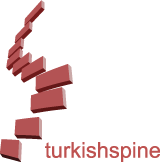Dear Colleagues,
I feel very privileged to be the person responsible for publishing this, the 2nd issue, of our professional journal this year. Publishing this issue was extremely difficult because of the pandemic. Therefore, I want to extend a heartfelt thanks to all the authors, reviewers, assistant editors, secretaries and the Galenos publishing team for the effort they expended in order to get it done. The Journal of Turkish Spinal Surgery (www.jtss.org), is the official publication of the Turkish Spine Society. I hope in the near future our journal will be indexed by other important international indexes. In addition, we are very happy to announce that we will be accepting new reviewers for our journal. Please apply to us, as soon as possible, if you are interested.
This issue includes several clinical research studies and a couple of case reports. I hope that each of you will take the time to review this issue very carefully, and add the information and insights contained herein, to your already very well informed knowledge bases.
In this issue, there are eight clinical research studies and five case reports. The first study is a Retrospective Clinical Study about Lenke 5 curves. Authors compared two groups of 59 patients in order to determine whether or not thoracic fusion was really necessary. The second study is a Clinical and Radiological Comparison of Spinopelvic Fixation Methods. 56 patients with S2-Alar-Iliac Screw, and Conventional Iliac Screw, were compared. The third, is a clinical study, entitled Respiratory Function in Adolescent Girls with Mild and Moderate idiopathic Scoliosis. The fourth article is a single center experience entitled Bakker Classification in Treatment of Sacral Stress Fractures. The authors of the fifth study examined Radiofrequency Ablation Plus Vertebroplasty in the Treatment of Symptomatic Vertebral Hemangiomas Without Neurological Deficit. The sixth study is a Clinical and Radiological Comparison of Surgical Treatment Methods in Patients with Cervical Spinal Stenosis while, in the seventh, the authors Evaluated Risk Factors of 1453 patients with Early Recurrent Lumbar Disc Herniation. The eighth article is a Retrospective Study about Management and Surgical Outcomes of Adult Spinal Intradural Lesions. The ninth article is a case report about Spontaneous Spinal Epidural Hematoma Following Warfarin Treatment. The tenth study is a case report about C7-T1 Disc Herniation Treated by Posterior Approach. The eleventh article is a case report entitled Cutaneous Meningioma Which is Uncommon Tumor at the Uncommon Region. A case report and Review of the Literature about Thoracic Intradural Extramedullar Arachnoid Cyst in an Adult is the twelfth article, and the thirteenth is a Case Report and Review of Literature about Isolated Degenerative C1 Spinal Stenosis.
Once again, I’d like to recognize the efforts of everyone who worked tirelessly to get this issue out to our readersin spite of the issues posed during these very unusual and difficult times. I hope our readers appreciate the workthat went into this, and that each of you take the time to read and absorb the vital information contained here. As always, it’s our goal to provide you with the most current research available, and information on current practices and methodology. Our mission is to guarantee that we remain on the forefront of all the latest developments, and this issue is intended to further that goal.
With kindest regards,
Editor in Chief
Metin Özalay, M.D.



